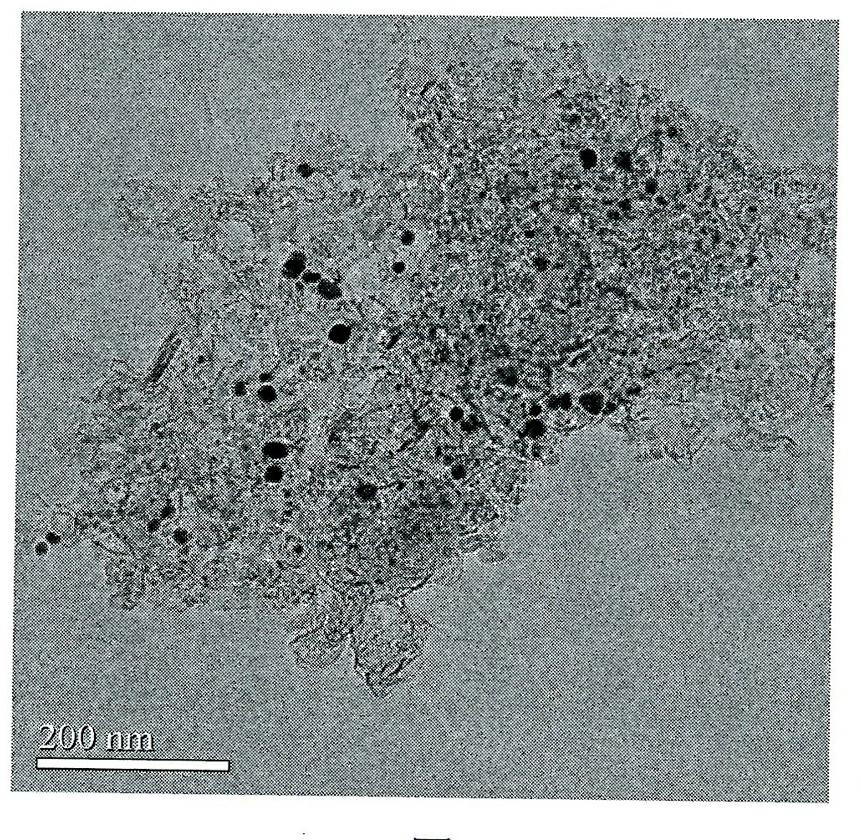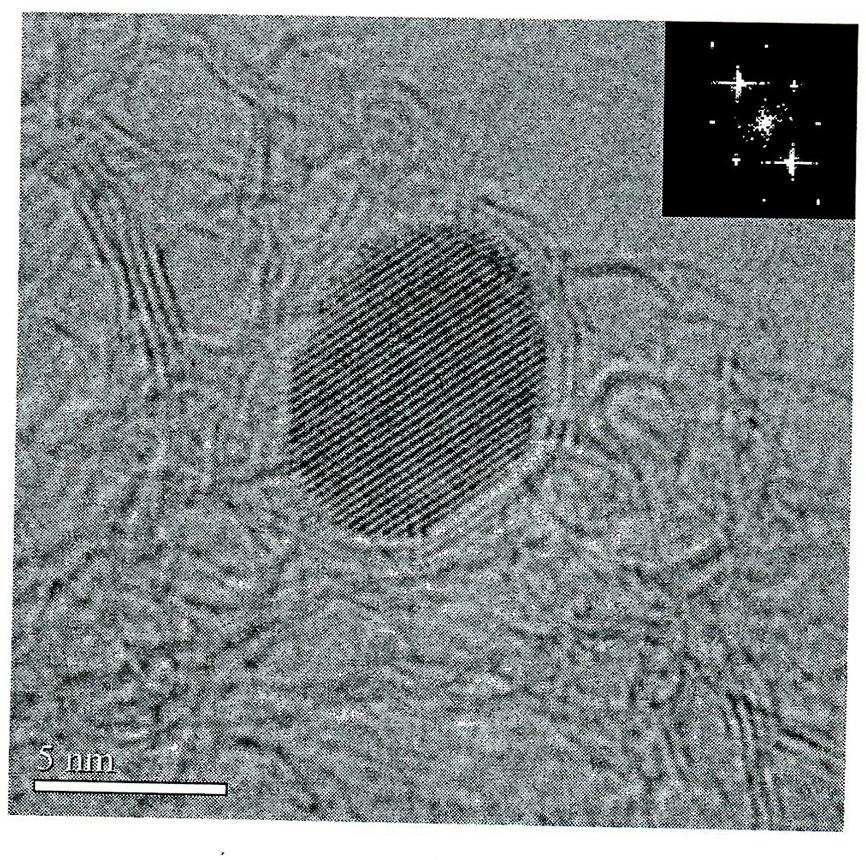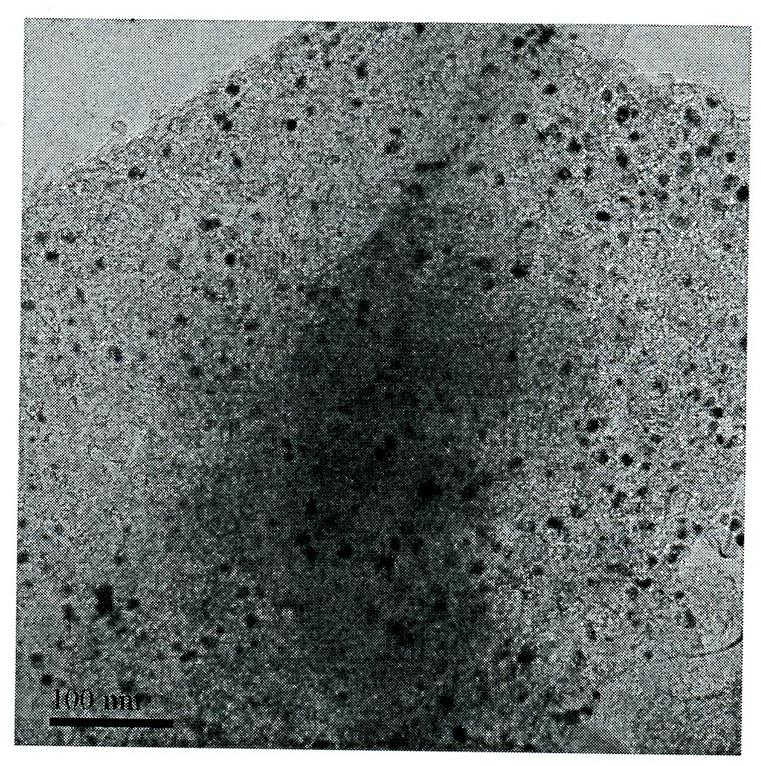Method for preparing carbon materials rich in nano diamond structure
A nano-diamond and carbon material technology, applied in the direction of diamond, nanotechnology, carbide, etc., can solve the problems of nano-diamond quality influence, difficulty in large-scale promotion and application, slow synthesis rate, etc., to achieve high quality, low cost, and high synthesis speed fast effect
- Summary
- Abstract
- Description
- Claims
- Application Information
AI Technical Summary
Problems solved by technology
Method used
Image
Examples
Embodiment 1
[0015] Take 20g of titanium carbide powder with a particle size of 800 mesh, put it into a high-energy ball mill, and then put 80g of GCr15 bearing steel balls into it. In order to prevent the titanium carbide powder from agglomerating during the ball mill, put 1ml of ethanol as a dispersant. The speed of the ball mill is 220 rpm, ball milling time is 5 hours. At this time, the particle size of the titanium carbide powder was about 2.0 μm. Then put the titanium carbide powder obtained after the above ball milling into a fused silica tube furnace, vacuumize to 0.1 Pa, and then pass in argon gas. The temperature of the tube furnace was raised to 900° C., and chlorine gas was introduced at a flow rate of 30 ml / min for 2 hours. After the reaction is completed, argon gas is introduced to remove residual chloride on the surface of the titanium carbide powder, and after cooling to room temperature with the furnace, a carbon material rich in nano-diamond structure can be obtained.
...
Embodiment 2
[0018] Take 20g of titanium carbide powder with a particle size of 800 mesh, put it into a high-energy ball mill, and then put 120g of GCr15 bearing steel balls into it. In order to prevent the titanium carbide powder from agglomerating during the ball mill, put 1ml of ethanol as a dispersant. The speed of the ball mill is 180 rpm, ball milling time is 20 hours. At this time, the particle size of the titanium carbide powder was about 0.5 μm. Then put the titanium carbide powder obtained after the ball milling into a fused silica tube furnace, vacuumize to 1 Pa, and then pass in argon gas. The temperature of the tube furnace was raised to 1200° C., and chlorine gas was introduced at a flow rate of 20 ml / min for 1 hour. After the reaction, argon gas is introduced to remove residual chloride on the surface of the titanium carbide powder. After cooling down to room temperature with the furnace, the carbon material rich in nano-diamond structure can be obtained.
[0019] Such as...
Embodiment 3
[0021] Take 20g of titanium carbide powder with a particle size of 800 mesh, put it into a high-energy ball mill, and then put 100g of GCr15 bearing steel balls into it. In order to prevent the titanium carbide powder from agglomerating during the ball mill, put 1ml of ethanol as a dispersant, and the speed of the ball mill is 200 rpm, ball milling time is 15 hours. At this time, the particle size of the titanium carbide powder was about 0.9 μm. Then put the titanium carbide powder obtained after the above ball milling into a fused silica tube furnace, vacuumize to 0.05 Pa, and then pass in argon gas. The temperature of the tube furnace was raised to 1100° C., and chlorine gas was introduced at a flow rate of 25 ml / min for 1.5 hours. After the reaction, argon gas is introduced to remove residual chloride on the surface of the titanium carbide powder. After cooling down to room temperature with the furnace, the carbon material rich in nano-diamond structure can be obtained.
PUM
| Property | Measurement | Unit |
|---|---|---|
| particle diameter | aaaaa | aaaaa |
Abstract
Description
Claims
Application Information
 Login to View More
Login to View More - R&D Engineer
- R&D Manager
- IP Professional
- Industry Leading Data Capabilities
- Powerful AI technology
- Patent DNA Extraction
Browse by: Latest US Patents, China's latest patents, Technical Efficacy Thesaurus, Application Domain, Technology Topic, Popular Technical Reports.
© 2024 PatSnap. All rights reserved.Legal|Privacy policy|Modern Slavery Act Transparency Statement|Sitemap|About US| Contact US: help@patsnap.com










